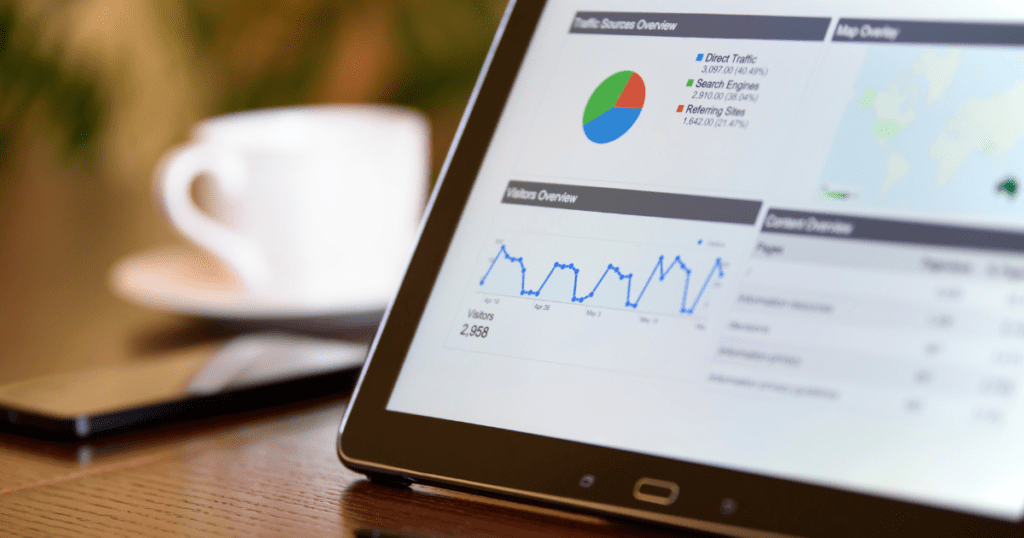In the vast digital landscape, Google stands as an omnipresent force, offering a suite of powerful marketing tools that can propel businesses to new heights of success. From enhancing visibility in search results to engaging with potential customers at every touchpoint, Google’s arsenal of marketing tools empowers businesses to navigate the complexities of the online realm with precision and efficiency. At the forefront of these tools is Google Ads, formerly Google AdWords. This robust advertising platform enables businesses to create and display ads across Google’s extensive network, reaching audiences precisely when searching for products or services related to the business offers.
But Google’s marketing prowess extends far beyond paid advertising alone. With Google Business Profile, businesses can establish a prominent online presence, appearing prominently in local search results and Google Maps while providing essential information such as their address, phone number, hours of operation, and customer reviews. Additionally, Google Analytics is a powerful ally in the quest for marketing success, offering comprehensive insights into website traffic, user behavior, and campaign performance. Together, these tools form the bedrock of effective Google marketing strategies, empowering businesses to connect with their audience, drive traffic, and achieve their goals in the ever-evolving digital landscape.
Google Ads

What Is Google Ads?
Ads, formerly AdWords, is one of the most influential and widely used online advertising platforms available to businesses today. It enables advertisers to create and display ads across Google’s vast network, reaching potential customers precisely when searching for products or services related to the advertiser’s offers. Through a pay-per-click (PPC) model, advertisers bid on keywords relevant to their offerings, and their ads appear at the top of Google search results or on other websites within the Google Display Network.
The platform provides advertisers with unparalleled targeting options, allowing them to tailor their ads based on location, demographics, interests, and search intent. With robust analytics tools, advertisers can track the performance of their campaigns in real time, measuring key metrics such as impressions, clicks, conversions, and return on investment (ROI). Ads empower businesses of all sizes to reach their target audience, drive website traffic, and achieve their marketing objectives precisely and efficiently.
How Do I Use It?
Using Ads effectively requires a strategic approach encompassing careful planning, precise targeting, and ongoing optimization. To begin, advertisers start by setting clear objectives for their campaigns, whether it’s driving website traffic, increasing brand awareness, or generating leads and conversions. With objectives in mind, advertisers conduct thorough keyword research to identify relevant search terms and phrases that align with their offerings and audience intent. With these keywords, advertisers create compelling ad copy that resonates with their target audience, leveraging persuasive language and clear calls-to-action to entice clicks and conversions.
Once the ads are crafted, advertisers set up their campaigns within the Google Ads platform, configuring targeting parameters such as location, demographics, interests, and device preferences to reach their desired audience effectively. Advertisers also establish bidding strategies and budgets to control how much they will pay for clicks and allocate their advertising spend efficiently. Throughout the campaign’s lifecycle, ongoing monitoring and optimization are essential. Advertisers analyze performance metrics such as click-through rate (CTR), conversion rate, and return on ad spend (ROAS). They make data-driven adjustments to keyword bids, ad copy, targeting criteria, and budget allocations to maximize campaign effectiveness and achieve their marketing objectives.
Google Business Profile

What is Google Business Profile?
Business Profile, formerly Google My Business, serves as a cornerstone for businesses aiming to establish a solid online presence and connect with potential customers. It’s a free tool provided by Google that allows businesses to manage their online presence across various Google services, including Search and Maps. With a Google Business Profile, businesses can provide essential information to users, such as their address, phone number, hours of operation, and website URL, ensuring they can be easily discovered and contacted by potential customers.
Moreover, Business Profile offers a platform for businesses to showcase their brand and engage with their audience directly. Businesses can add photos and videos to their profile, giving users a glimpse into their products, services, and ambiance. Additionally, users can leave reviews and ratings, providing valuable feedback for businesses while helping other users make informed decisions. By actively managing their Business Profile, businesses can enhance their visibility in local search results, build trust and credibility with potential customers, and drive foot traffic and sales to their physical locations or websites.
How Do I Use It?
Utilizing Business Profile effectively involves strategic steps to optimize visibility, engagement, and conversion. To begin, businesses should claim and verify their profile to gain access to the full suite of features and control over their listing. Once verified, it’s crucial to ensure that all business information, including address, phone number, hours of operation, and website URL is accurate and up-to-date. Providing comprehensive and consistent information improves the user experience and boosts the profile’s visibility in local search results.
Next, businesses should optimize their profile to maximize engagement and appeal to potential customers. This includes adding high-quality photos and videos that showcase the business’s products, services, and ambiance. Encouraging satisfied customers to leave reviews and ratings can also enhance credibility and trustworthiness while responding promptly and professionally to positive and negative reviews demonstrates a commitment to customer satisfaction. Additionally, businesses can leverage features like Google Posts to share updates, promotions, and events directly on their profile, further engaging with their audience and driving traffic to their physical location or website. By actively managing their Google Business Profile and leveraging its full potential, businesses can establish a robust online presence, attract more customers and achieve their marketing goals effectively.
Google Analytics

What Is Google Analytics?
Analytics is a powerful and indispensable tool for businesses seeking to understand and optimize their online presence. At its core, Analytics is a web analytics platform provided by Google, offering comprehensive insights into website traffic, user behavior, and performance metrics. By tracking and analyzing data gathered from website visitors, Analytics empowers businesses to make informed decisions, identify areas for improvement, and maximize the effectiveness of their online marketing efforts.
With Analytics, businesses can gain valuable insights into their website performance, including total website visits, page views, bounce rate and average session duration. The platform also provides in-depth demographic information about website visitors, such as their location, age, gender and interests, allowing businesses to understand their audience better and tailor their marketing strategies accordingly. Moreover, Analytics enables businesses to track specific goals and conversions, such as form submissions, product purchases or newsletter sign-ups. It provides valuable data to measure the effectiveness of their marketing campaigns and optimize their website for maximum engagement and conversion.
How Do I Use It?
Using Analytics effectively involves a strategic approach to extract actionable insights to inform decision-making and optimize website performance. To begin, businesses should ensure that the Analytics tracking code is correctly installed on their website to gather accurate data. Once set up, businesses can navigate through the platform’s intuitive interface to access a wealth of information about their website traffic and user behavior. By exploring reports such as audience demographics, acquisition channels, and behavior flow, businesses can understand who their website visitors are, how they found the site, and how they engage with its content.
With this data, businesses can identify strengths and weaknesses in their website performance and make data-driven decisions to improve user experience and achieve their goals. For example, businesses can analyze which pages have the highest bounce rates or the longest average session durations to pinpoint areas for optimization. By experimenting with different website layouts, content formats, and calls to action, businesses can iteratively refine their website to better align with user preferences and drive conversions. Additionally, businesses can track the effectiveness of their marketing campaigns by setting up goals and tracking conversions, allowing them to allocate resources more efficiently and optimize their marketing strategies for maximum ROI.
The potential for businesses to thrive in the digital realm knows no bounds. From the precision targeting of Google Ads to the local visibility optimization of Google Business Profile and the insightful analytics provided by Google Analytics, these tools offer many opportunities to connect with audiences, drive engagement and achieve marketing objectives. However, success in Google marketing doesn’t come from simply possessing these tools—it stems from a strategic approach, a commitment to continuous improvement, and a relentless pursuit of excellence in delivering value to customers.
Next Steps
Now, armed with knowledge and insights gleaned from this journey, it’s time to take action and unleash the full potential of Google marketing for your business. Whether you’re embarking on your first Google Ads campaign, optimizing your Google Business Profile, or delving into the depths of Google Analytics data, remember that every step forward is a step closer to realizing your business goals. So, seize the opportunity, embrace the challenge, and let your passion for innovation and growth propel you to new heights of success in the dynamic world of Google marketing. Your journey begins now—let’s make it extraordinary.





